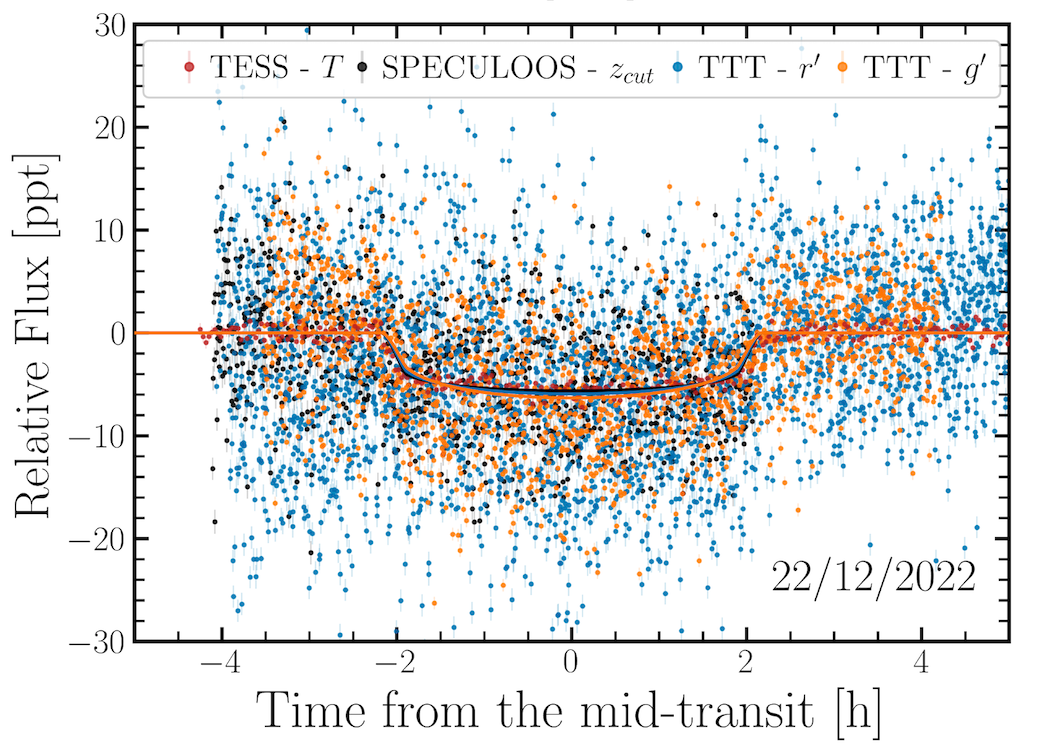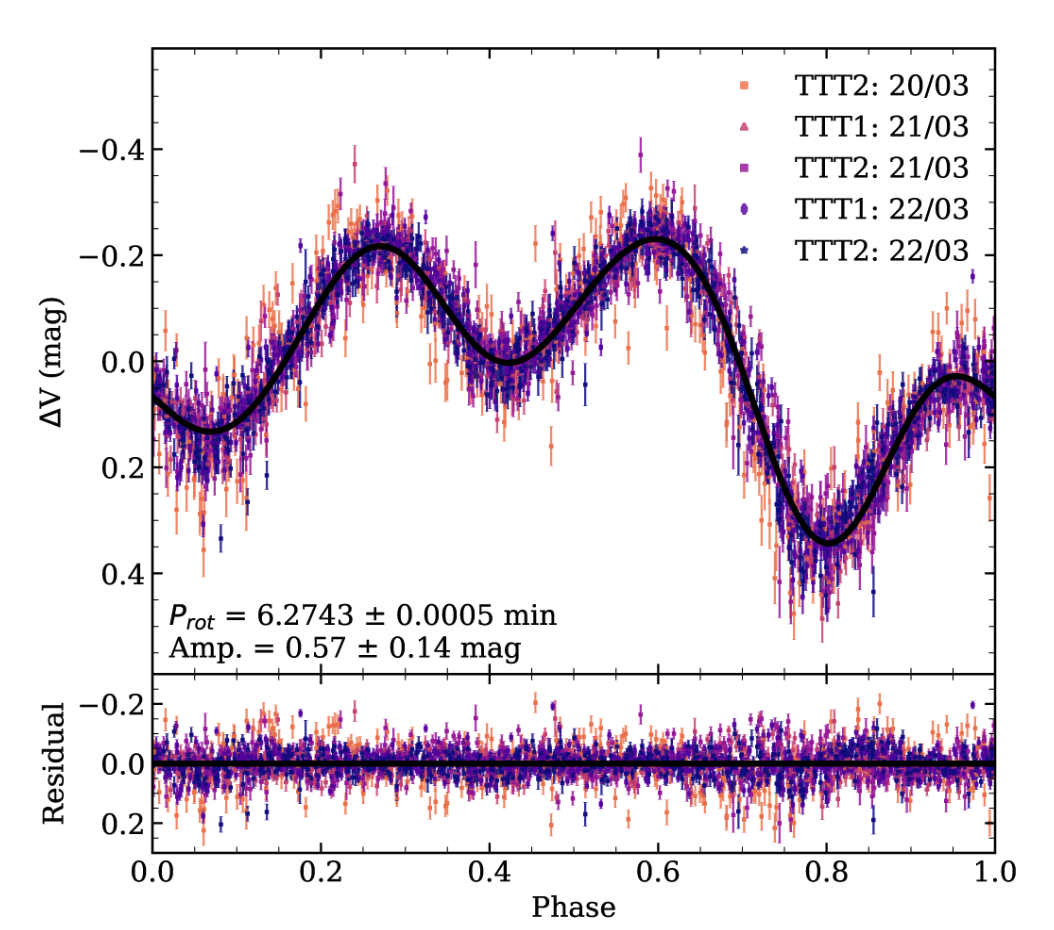Two-meter Twin Telescope (TTT). A new way of doing science
- 1Light Bridges SL
- 2Instituto de Astrofísica de Canarias
TTT (Two-meter Twin Telescope) installation is a network of four telescopes located at the Teide Observatory, in the island of Tenerife (Canary Islands, Spain). TTT1 and TTT2 telescopes are two 0.80 m AltAz telescopes with two Nasmyth ports of both telescopes (f/4.4 and f/6.8). The f/4.4 is equipped with QHY411M cameras, composed of 151 Mpixel 3.76 μm sCMOS sensors, resulting in an effective FoV of 51.4x 38.3 arcmin2 and a pixel scale of 0.22" pixel−1. The f/6.8 has a Ikon-L 936 (FOV: 17.34’ × 17.34’, 0.51 ’’/px) and a SWIR QHY990Pro II InGaAs camera (FOV: 4.64’ x 3.5’, Plate scale: 0.2 ’’/px).
They operate fully robotically and feature a QPIS (Queue Planning Intelligent System) managed by a machine learning algorithm, supervised by senior astronomers with proven observational experience.
Scientific proposals are evaluated within 48 hours. Once approved, observations can be conducted and, if they are successful, images could be obtained in 24 hours -astrometric & photometric calibrated in real time-.
TTT1 and TTT2 have been operated on routinely since december 2022 and demonstrated to provide excellent photometric measurements. We have been running different scientific programs on exoplanetary transits (see Figure 1), asteroids follow-up astrometry and photometry (see Figure 2), and comets. Some of the most interesting results, including exoplanets and Near Earth Asteroids lightcurves will be presented.

Figure 1. Phased-folded transit taken on 22 December 2022 in T, g′, r′, and zcut filters. The coloured lines show the best transit model in each filter. Reproduced from Mallorquín et al. (2024) (10.48550/arXiv.2402.17448)

Figure 2. Phased light curve of 2023 DZ2 (fast rotator) computed from photometric measurements obtained by TTT1 and TTT2. The rotation period and amplitude of the curve are shown in the lower left corner of the top panel. The total coverage is 9.8 h, distributed over three consecutive nights. Reproduced from Popescu et al. (2023) ( https://doi.org/10.1051/0004-6361/202346751).
How to cite: Serra-Ricart, M., R. Alarcón, M., Licandro, J., and Abárzuza, F.: Two-meter Twin Telescope (TTT). A new way of doing science, Europlanet Science Congress 2024, Berlin, Germany, 8–13 Sep 2024, EPSC2024-631, https://doi.org/10.5194/epsc2024-631, 2024.